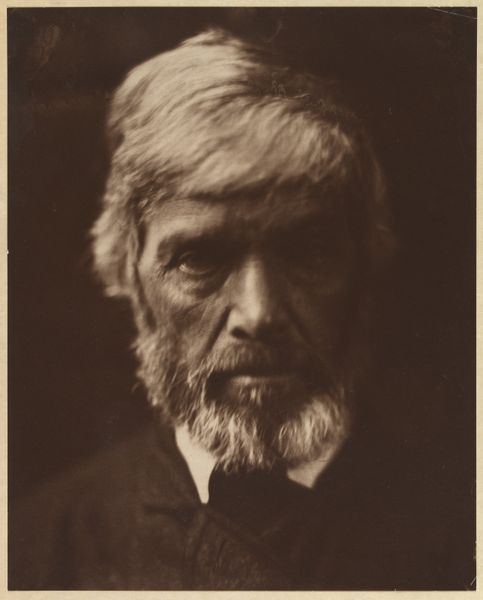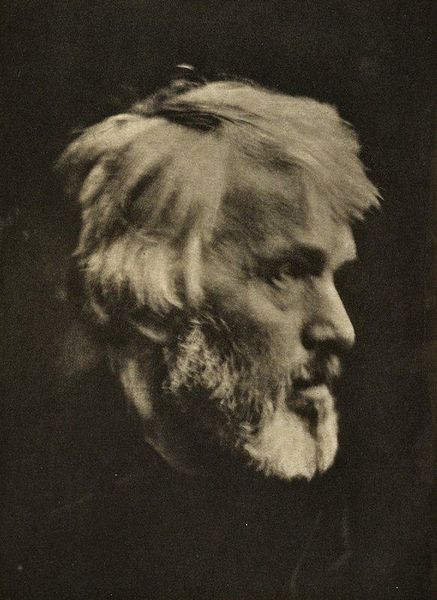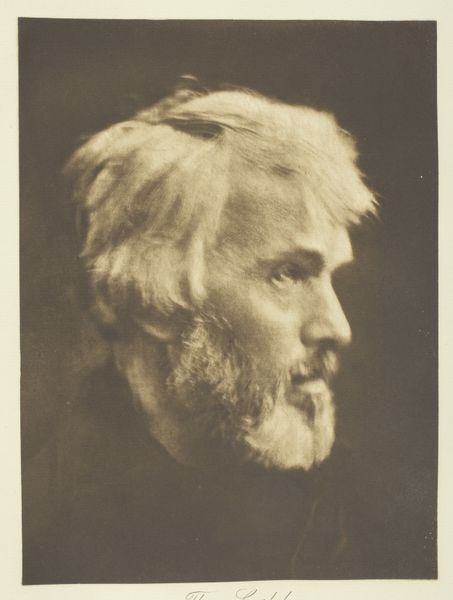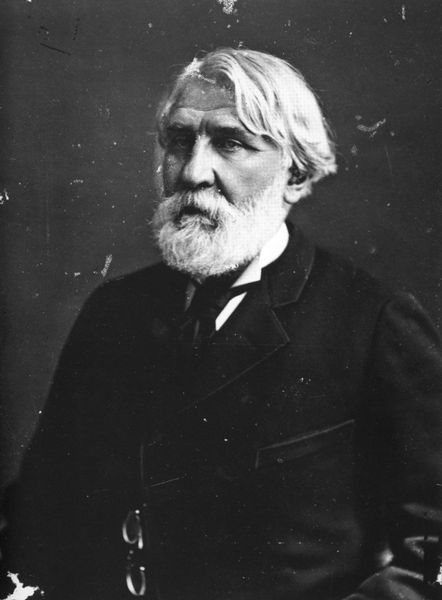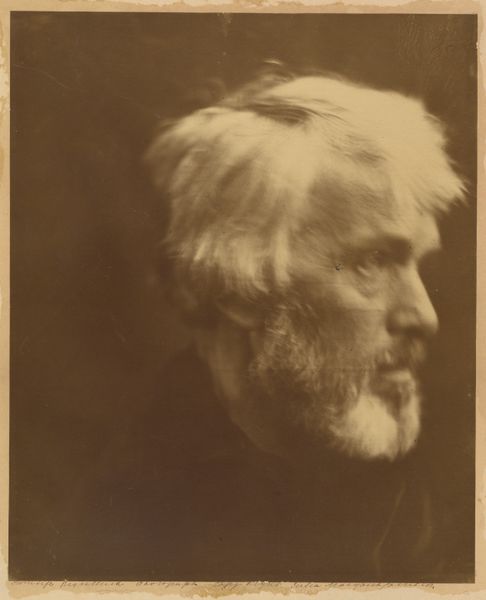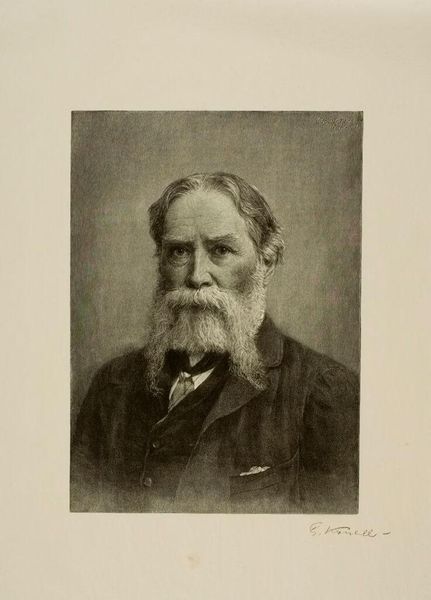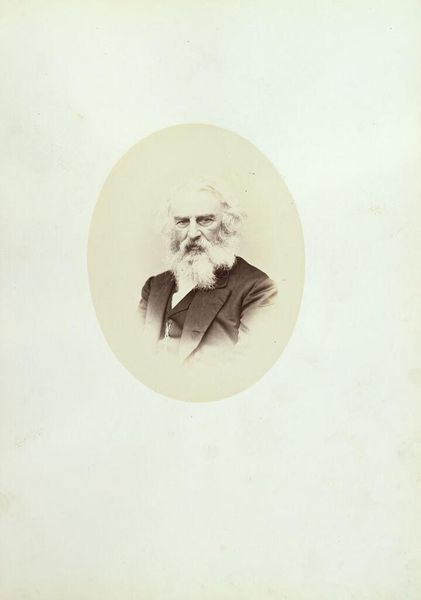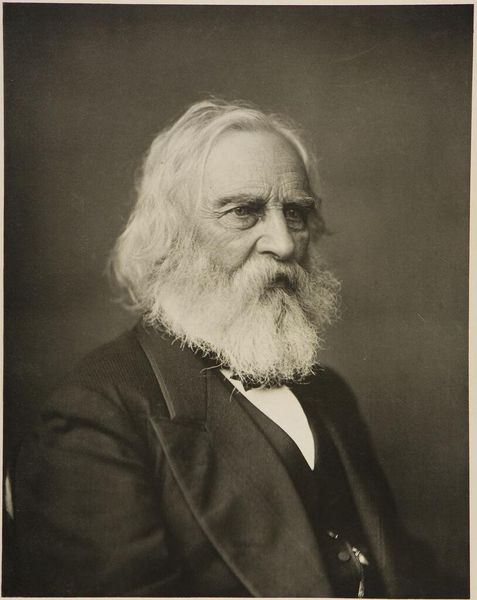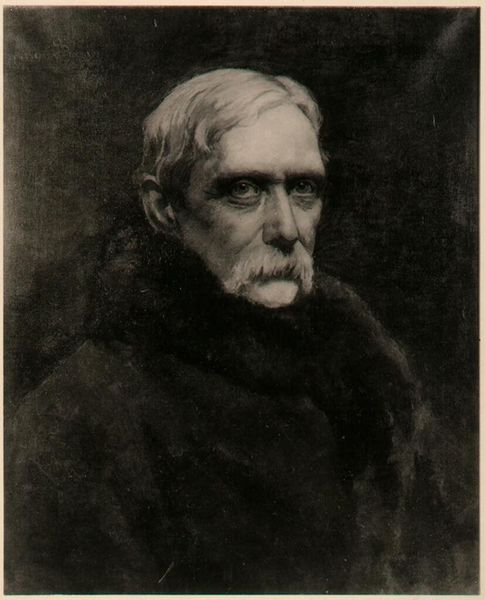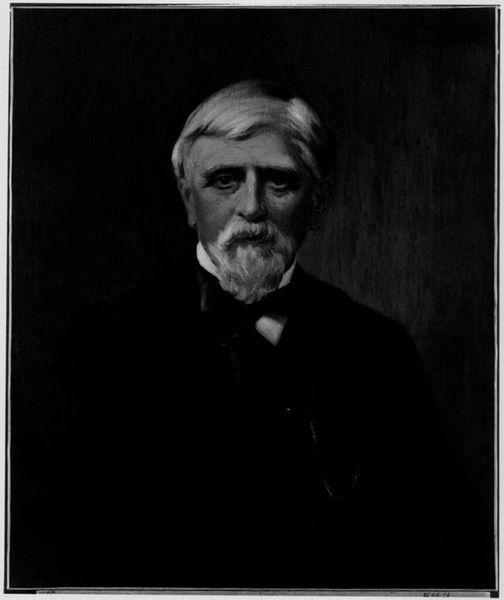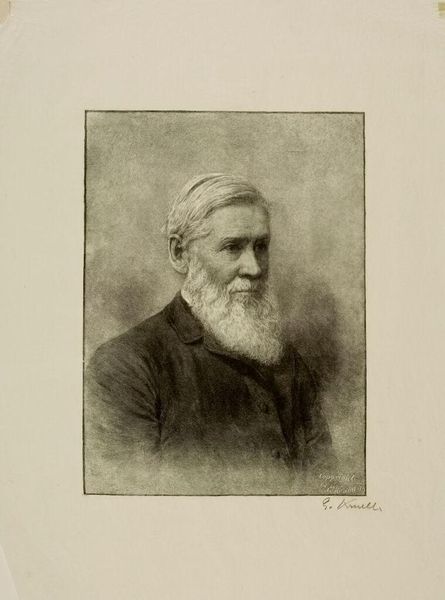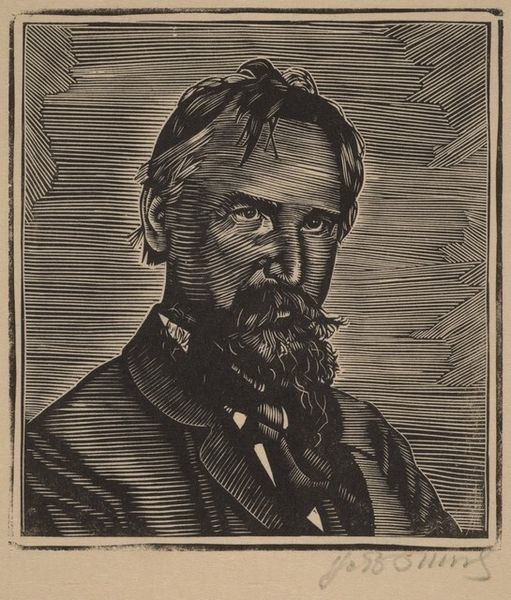
Dimensions: 7 13/16 x 6 1/8 in. (19.84 x 15.56 cm) (image)
Copyright: No Copyright - United States
Curator: Julia Margaret Cameron created this captivating portrait of Thomas Carlyle around 1867. What strikes you first about this gelatin-silver print? Editor: Oh, wow. It’s like looking into the soul of a storm-tossed ocean. So much raw emotion, etched right into his face. Is he angry, contemplative, or just incredibly weary? All of the above, perhaps. Curator: The "Carlyle" portrait reveals much about Cameron's commitment to capturing psychological depth alongside her distinct style, particularly regarding representation of powerful men from that time. This raises questions regarding idealised notions of masculine intellectualism. Editor: Definitely. And that’s what makes it so magnetic. It's imperfect. You can see every wrinkle, every shadow. Unlike, say, a formally posed studio shot, this is reality. Stripped bare, I guess you could say. Curator: It is crucial to place Carlyle, who was a controversial Scottish essayist, within the colonial discourses and gender hierarchies prevalent during that period. We can then critically examine how photography might reinforce or challenge these norms. Editor: Hmmm, now that’s food for thought. I am mostly struck by her focus on the details around the eyes. There’s almost no need for background; it's all there in the light, lines and the gaze itself. The effect gives the impression of movement, drawing you in closer as you look into the picture. Curator: Her aesthetic choices indeed prompted much debate back then. Her portraits were praised and panned. The sharp focus on select details can be contextualized by a study of the lens and materials available during her era, as well as artistic license, prompting audiences to reflect deeply on both presence and representation. Editor: I am wondering if I will ever appear so…authentically on film! Ha. Thank you; I’ll never see portraiture quite the same way again. Curator: Indeed! Viewing Carlyle through multiple interpretive lenses expands our engagement beyond surface aesthetics, helping us comprehend complex social power dynamics across generations.
Comments
No comments
Be the first to comment and join the conversation on the ultimate creative platform.
